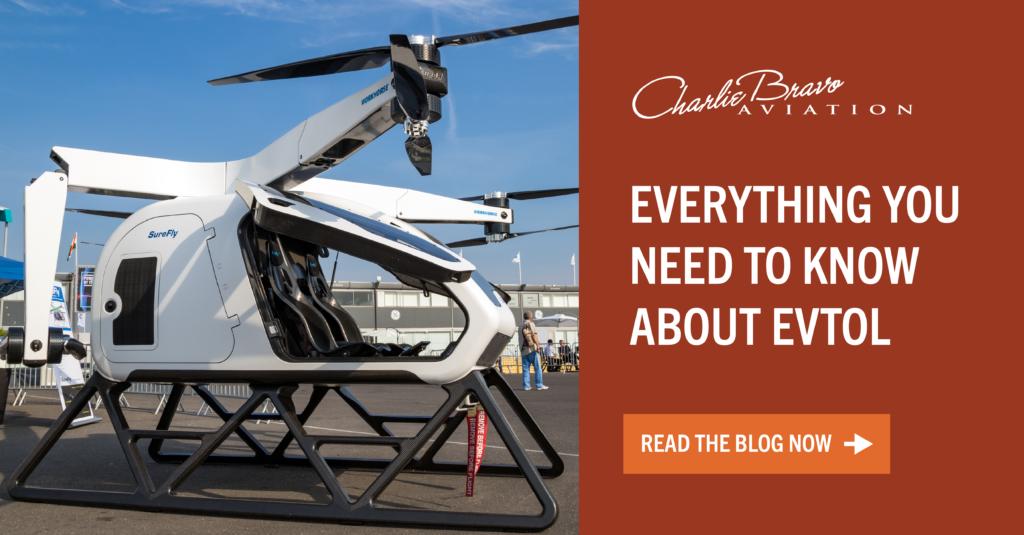If you are interested in the future of air travel and innovations in this industry, you’ve probably heard of the latest advancement, eVTOL. Electric Vertical Takeoff and Landing (eVTOL) vehicles have become one of the most exciting innovations on the horizon. eVTOL technology enables aircraft to take off and land vertically, drastically simplifying aviation operations. In this blog post, we will dig into everything you need to know about eVTOL – what they are, their benefits, where the technology sits now, and ways they can be used personally. So buckle up – and let’s jump right in!
What is eVTOL and How Does it Work
The future is now with the latest advancements in electric vertical takeoff and landing technology. This innovative form of transportation is designed similarly to a helicopter but is powered by electric motors instead of traditional jet engines. Through these electric motors, eVTOL vehicles offer whisper-quiet flights with zero emissions. In addition, thanks to their sleek and aerodynamic design, these vehicles can take off and land vertically, allowing them to access urban landing sites that helicopters cannot.
eVTOLs , sometimes called ‘air taxis,’ have a small capacity of two to six passengers and a pilot. They utilize batteries as a power source and operate like helicopters, hovering and flying. However, it should be noted that helicopters fall under the category of VTOL aircraft.
Benefits of eVTOL vs. Conventional Aircraft
In recent years, we have seen a surge in the development and testing of electric vertical takeoff and landing (eVTOL) aircraft. These innovative designs offer numerous benefits in comparison to conventional aircraft. Firstly, they are much quieter and produce lower emissions, making them more environmentally friendly and cost-efficient. Not only that but eVTOLs have safety benefits, too. The VTOL rotor design makes them safe due to their high number of rotors. Moreover, in case one of them malfunctions, there are several others to provide support.
Additionally, eVTOL aircraft can take off and land vertically, eliminating the need for long runways and making them more versatile in terms of where they can travel. Lastly, eVTOL aircraft are typically smaller and can operate in areas larger aircraft cannot, allowing for more accessibility and convenience for passengers.
Challenges & Considerations for eVTOL
The emergence of electric vertical takeoff and landing (eVTOL) aircraft has sparked excitement in the aviation industry for their potential to revolutionize transportation. However, before these futuristic aircraft can become a regular sight in the skies, various challenges and safety considerations need to be addressed. Perhaps the biggest challenge is navigating complex urban environments and ensuring air traffic control systems are equipped to handle eVTOLs. In addition, while there are safety benefits from the rotor design of eVTOLs, time is still needed to develop safety protocols for them.
Where is the Technology at Now with eVTOL
With the technology evolving at an unprecedented pace, it is hard to say when eVTOL will be cleared for use in the United States, but it might be sooner than you would expect. eVTOL is currently being tested and must be certified by the Federal Aviation Administration, which is expected to take time. One possible way to make eVTOLs available sooner is to certify them for personal use, which has a less strict certification process compared to commercial use. AIR ONE, manufactured by AIR, is waiting to receive its FAA Part 91 aircraft operator certification. Once granted, the eVTOL can be used for private or personal purposes.
Future Outlook for eVTOLs & How You Can Get Involved
The future of eVTOLs, or electric vertical takeoff and landing aircraft, is looking brighter. From convenient business travel to recreational flights and even commercial applications like air taxi services, eVTOLs are a game-changer. Imagine skipping the traffic and hopping in an eVTOL for a quick business trip across town or taking a scenic flight over the mountains on the weekend. These innovative aircraft also have the potential to revolutionize transportation in urban areas, reducing traffic congestion and cutting down on travel times. With the many personal applications of eVTOL technology, the sky’s the limit.
In conclusion, electric aircraft are the future of air transport. Though it faces hurdles, current advances show great promise in making eVTOLs a viable form of transportation. With heavy investments, the technology and improved infrastructure and regulations are progressing rapidly.
Want to hear about more important updates in the private aviation industry? Sign up for our newsletter to make sure you don’t miss out. By joining our list of Charlie Bravo Insiders, you’ll learn about aircraft before they come to the market, gain insight that can save you money when you decide to buy or sell and read our latest articles and resources.





